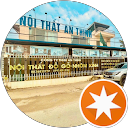Ngôi Nhà Bá Kiến: Exploring the Historical Setting of Chí Phèo
Introduction to a Literary Landmark
Ngôi Nhà Bá Kiến (Ba Kiến’s House) is an essential stop for travelers interested in Vietnamese history, literature, and traditional architecture. Located in Nhân Hậu Village (formerly Đại Hoàng Village), Hòa Hậu Commune, Lý Nhân District, this centuries-old house is famous as the setting for the tyrannical character Bá Kiến in Nam Cao’s legendary 1941 short story, Chí Phèo.
Real-Life Connection: The character Bá Kiến, a wealthy and powerful landlord, drew inspiration from a real-life figure who owned this impressive house, providing a tangible link to one of Vietnam’s most important literary works. Therefore, visitors actively immerse themselves in the world depicted in the novel.
Cultural Symbol: The house stands as a stark symbol of the class divisions and the oppressive power structure that dominated the Vietnamese countryside in the early 20th century.

Traditional Architecture and Design
The structure itself is a remarkable example of wealthy traditional Northern Vietnamese architecture from the early 1900s.
Timeless Materials: Construction primarily used premium lim wood (gỗ lim), ensuring its longevity for over a century. The main house features a traditional ba gian (three-bay) layout. Moreover, the 16 large wooden columns rest on massive green stone blocks, showcasing the original owner’s wealth and status.
Intricate Craftsmanship: Artisans skillfully carved the beams and rafters with traditional motifs, including Chinese characters and images of dragons and phoenixes. The roof utilizes traditional fired tiles, and historical accounts note that builders used a mixture of molasses, soot, and lime instead of cement for the mortar. Consequently, the house has remarkably withstood the test of time and weather.
Current State: The house remains structurally sound today and local authorities recognize it as a provincial-level relic.
The Visitor Experience and Local Flavor
Visiting Ngôi Nhà Bá Kiến provides travelers with a unique blend of history, culture, and local tradition.
Historical Glimpse: The house offers a rare look into the lifestyle of the powerful elite in rural Vietnam before the August Revolution. Visitors observe the traditional layout, furniture, and artifacts that reflect the period.
Literary Tourism: Because of its connection to Chí Phèo, the site attracts Vietnamese literature enthusiasts and international visitors eager to understand the cultural context of the story.
Local Specialties: The surrounding area, often still referred to as Vũ Đại Village (Làng Vũ Đại), is famous for local specialties. Thus, many tourists visit to purchase famous local products such as:
Vũ Đại Braised Fish (Cá Kho Làng Vũ Đại): A savory, slow-cooked fish dish recognized nationally.
Ngự Bananas (Chuối Ngự): A special, sweet banana variety.

Practical Details for Your Trip
Travelers should respect the site’s historical significance and rural location.
Address: F5H4+XV9, Hòa Hậu, Lý Nhân, Hà Nam, Vietnam. The house is situated within a tranquil rural village setting.
Operating Hours: The house is typically open daily from 7:00 AM to 5:00 PM, but we always advise checking with local tourism services for any changes.
Entrance Fee: Generally, visitors are expected to pay a small fee (often symbolic or nominal) to the caretaker, who manages the house and provides basic information.
Travel Tip: Since the house maintains a traditional aesthetic, visitors should wear polite, respectful clothing. We encourage you to bring cash for the small entrance fee and for purchasing local specialties.




